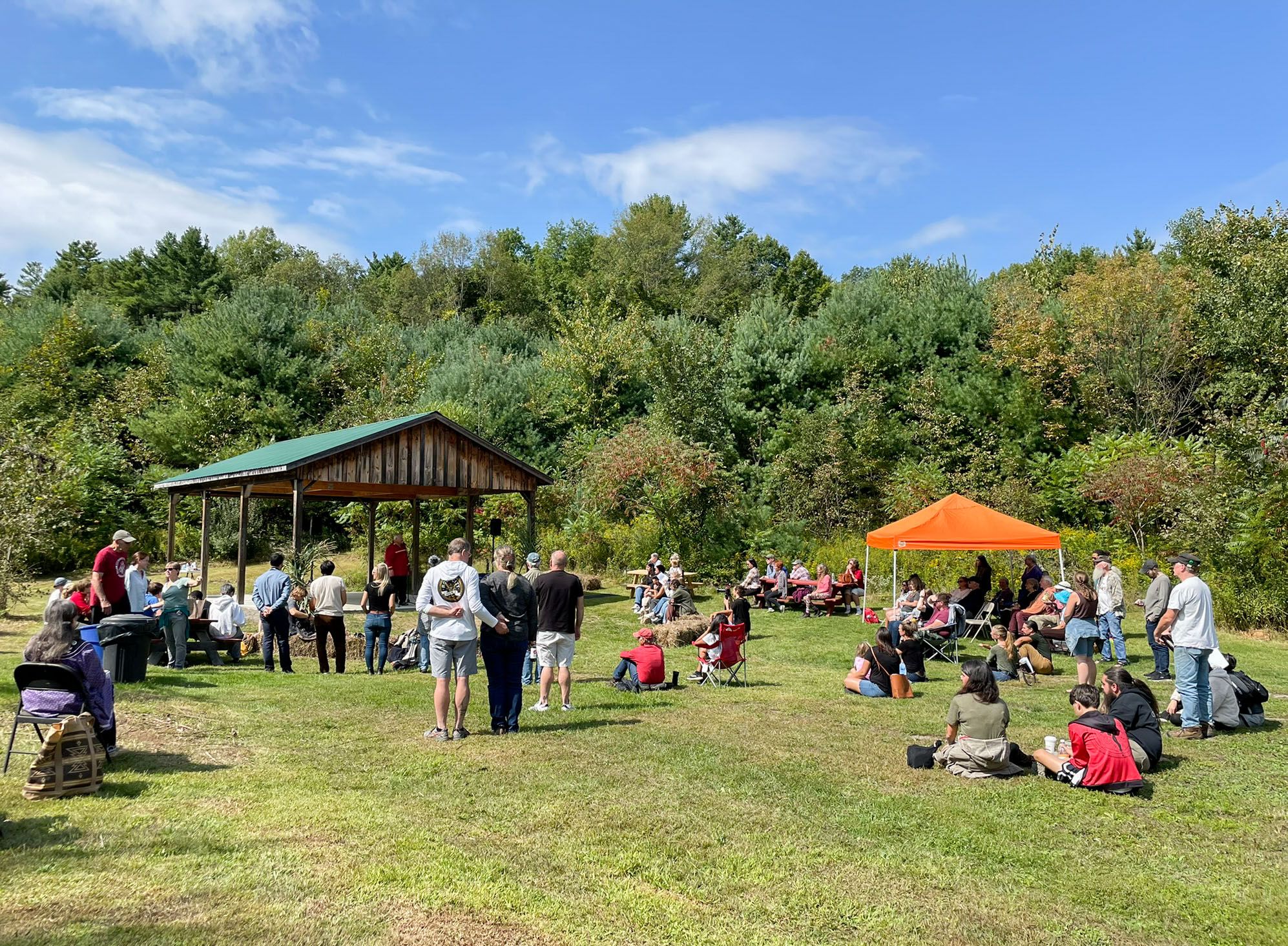The Ahimsa Festival is This Weekend: Soul-Healing, Movement, and Music

Amid the beautifully colored leaves, a gathering of seekers and world-class teachers will again converge on the historic grounds of Lakota’s ’s Farm in Cambridge for the Ahimsa Yoga and Music Festival, September 23rd– 24th.
The Ahimsa Festival invites you to relax and release all those energies that no longer serve you. Let stress melt away in a nourishing environment of like-minded individuals within the earth-centered elegance of Lakota’s ’s Farm, a rolling 34-acre expanse of grass, ponds, and grazing horses.
Get a spiritual high from a schedule that includes approximately 20 different wellness sessions daily. These 90-minute workshops include yoga, meditations, and sound bath healings that settle your mind and focus your awareness.
“Our goal is to bring people together in a safe place to connect on an amazing property. This festival is special because it has all these amazing offerings all in one spot,” said event organizer Kristen Zorda, owner of Yoga Mandali in Saratoga Springs.
Steady the Mind, Restore the Soul
The Ahimsa Festival, which was founded in 2012, attracted more than 200 attendees from around the country last year. The ancient idea of Ahimsa, which means “non-violence” in Sanskrit, is an approach that encourages distinctions to fall away in this soothing space, creating a broader sense of compassion for all living beings, and inspiring a deeper sense of personal growth.
Kimberly Revet, owner of the Wedding Barn at Lakota’s Farm is passionately living her dream on the property, imbuing it with an energetic satisfaction that is palpable.
In this nourishing environment, visitors further their spiritual development and experience the restorative teachings of a variety of skilled instructors including: the revered Patrick Franco, founder of the award-winning, internationally-acclaimed YogaRenew teacher training program; the dynamic Raghunath Cappo, co-founder of Supersoul Yoga and Farm; the Kripalu School of Yoga’s vibrant Coby Kozlowski; and former local Cindy Lundsford, the previous owner of several studios in the area including Hot Yoga Saratoga.
Take part in the wealth of engaging activities, meditation sessions, Bhakti, Vinyasa, aerial, and chair-supported yoga in the 150-year-old post-and-beam Bhakti Barn and the welcoming Ganesha Tent, rain or shine.
Release Further by Extending Your Stay
Adding to your transcendent experience, all weekend long attendees will have the opportunity to shop the Ahimsa Festival’s Vendor Village – a gathering of 20-30 food, beverage, craft, and wellness vendors selling clothing, jewelry, art, health products, meditation aids, and more.
Hear the healing spiritual music of the New Orleans-based Sean Johnson and the Wild Lotus Band, and listen to the therapeutic sounds of the SOMA Kirtan Band. On Saturday night, DJ and digeridoo musician Ifa Halima Bumi leads an electrifying dance party as blazing bonfires illuminate the grounds.
Stay the night while reconnecting with the Earth in Lakota’s Farm’s limited rustic onsite camping. Just minutes away, find event partner, The Preserve Battenkill River Glamping, an idyllic riverfront retreat offering deluxe tent cabins, glamping cabins, and a geodesic stargazing dome. There is a riverside wood-fired sauna, pizza oven, fire pits, kayak/canoe boat launch, free Wi-Fi, an Outpost Resort Store for essentials, and the Provisions Food Truck offering a farm-to-table menu of breakfast, lunch, and dinner choices. For glamping reservations and more information, go to https://battenkillresort.com
The Ahimsa Yoga and Music Festival opens Saturday, September 23rd, at 9am and concludes Sunday, September 24th, at 5pm. Single Day passes start at $199; Weekend passes start at $349. For tickets and event details, go to https://www.ahimsayogafestival.com















